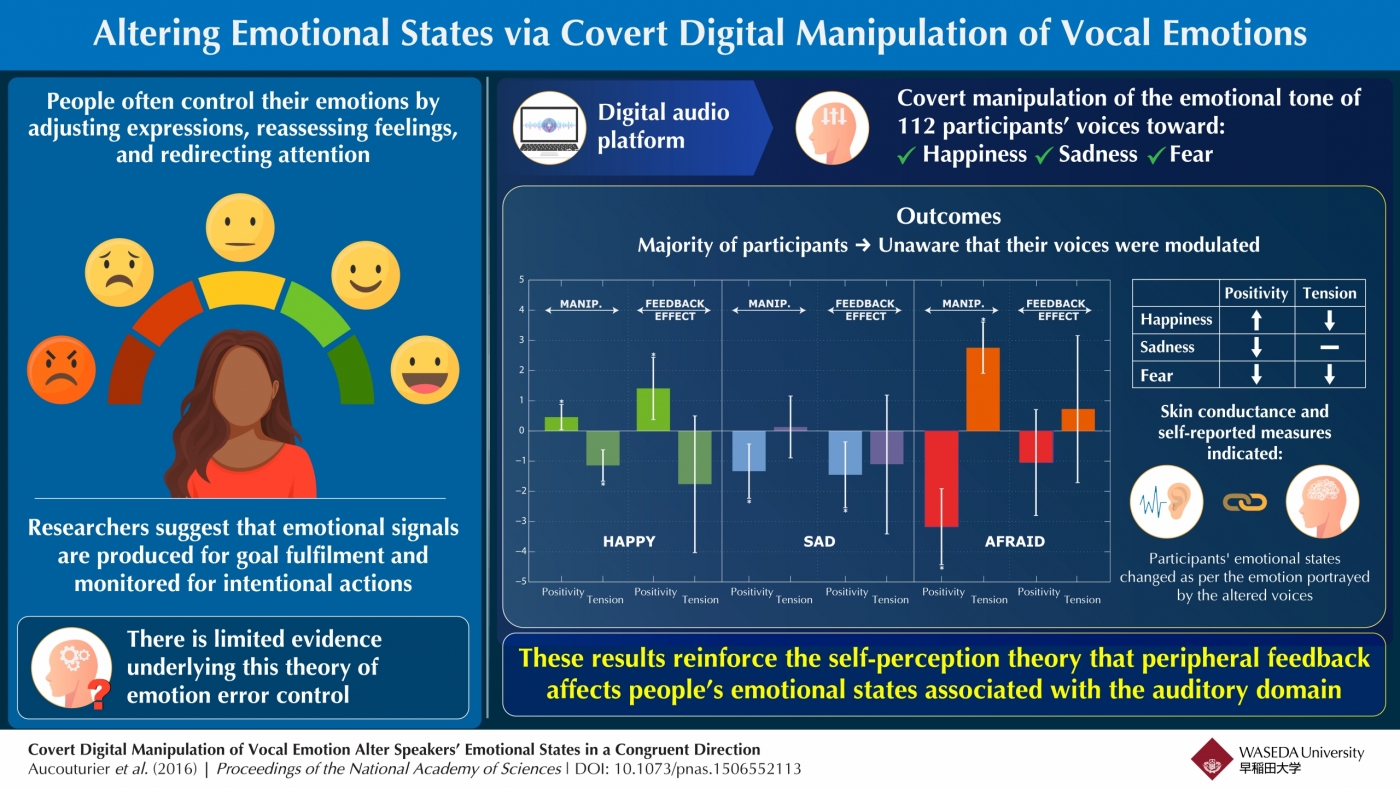How do our own voices affect our emotional states?
People are known to regulate their emotions in different situations. Current psychological research indicates that people often do so by adjusting vocal expressions, reassessing feelings, and redirecting attention, thus blurring the distinction between cognitive and emotional processes. Hence, it has been suggested that emotional signals are produced primarily for goal orientation and monitored for intentional actions. However, there is little evidence underlying this theory of emotion error control.
An international research team led by Professor Katsumi Watanabe of Waseda University utilized auditory signals to induce emotional errors and analyze their effects on people.
First, they asked 112 Japanese participants to read a short story while listening to their own voices. After two minutes, the researchers covertly and gradually modified the emotional tone of the participants’ voices toward happiness, sadness, or fear, using a newly created digital audio platform.
Interestingly, most participants did not realize that their voices were being manipulated. Instead, they assumed the vocal alteration to be their own, which changed their mood. For instance, while happy feedback led to more positivity, inducing sadness reduced positivity among the participants. This finding was confirmed by self-rated pre- and post-reading positivity and tension scores.
The team also measured the skin conductance levels of the participants and found that they had high values of skin conductance corresponding to activated emotional states. What’s more, the participants did not compensate for the audio alterations by modifying their pitch.
These findings shed light on the vocal emotion production mechanism, demonstrating that peripheral (outside the brain) feedback affects emotions associated with vocal expressions. It reinforces the self-perception theory, which states that people perceive themselves through strategies similar to those used for understanding others.
This mechanism could be used to enhance decision-making processes and treat mood disorders by inducing positive attitude changes.
Link to the original journal article:
https://www.pnas.org/doi/full/10.1073/pnas.1506552113
About the author
Professor Katsumi Watanabe obtained his Ph.D. in Computation and Neural Systems from California Institute of Technology in 2001. He has been serving as a Professor at the Faculty of Science and Engineering in Waseda University in Japan since 2015. He has published over 200 research articles and has received the Commendation for Science and Technology by the Minister of Education, Culture, Sports, Science and Technology in 2020. His research interests include Cognitive Science, including perception, cross modal interactions, sensorimotor learning, development, attention, eye movement, social cognition, decision making and neuroscience.









